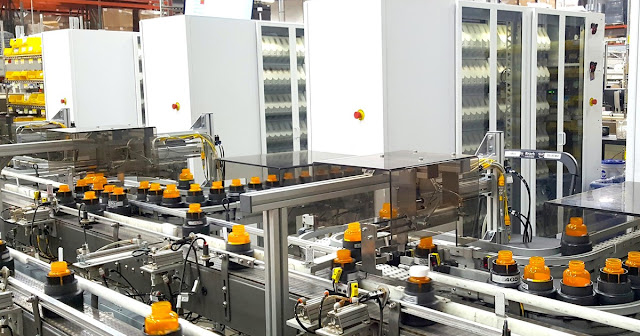Streamlining Medication Management: Central Fill Pharmacy Automation
Central Fill Pharmacy Automation
Central
Fill Pharmacy Automation is an innovative approach to streamlining medication
management processes in healthcare facilities. It involves the implementation
of advanced robotic systems and software solutions to automate the prescription
filling and dispensing tasks typically performed by pharmacists and pharmacy
technicians. This automation technology offers numerous benefits, including
increased efficiency, accuracy, and cost savings. One of the key advantages of
pharmacy automation is its ability to handle a high volume of prescription
orders quickly and accurately. The automated systems can process and fill
prescriptions at a much faster rate than manual methods, reducing the time
required to prepare medications for patients.
According
to Coherent Market Insights, The global central fill
pharmacy automation market is
estimated to be valued at US$ 416.06 Mn
in 2022, and is expected to exhibit a CAGR
of 12.2% over the forecast period (2022-2030).
This
increased efficiency is particularly beneficial in busy healthcare settings,
such as hospitals or large retail pharmacies, where a large number of
prescriptions need to be filled each day. Moreover, central fill pharmacy
automation significantly reduces the risk of errors in medication management.
The robotic systems are programmed to precisely measure and dispense medications,
minimizing the chances of dosage mistakes or incorrect labeling. The software
solutions integrated into the automation systems also enable real-time tracking
and verification of prescriptions, ensuring that the right medication reaches
the right patient every time. In addition to improving efficiency and accuracy,
central fill pharmacy
automation offers cost-saving advantages.
By
automating prescription filling processes, healthcare facilities can reduce the
labor costs associated with manual medication management. The robotic systems
can operate continuously, requiring minimal human intervention, which reduces
the need for a large workforce. This allows pharmacies to optimize staff
resources and allocate personnel to more complex and specialized tasks, such as
medication counseling and patient care. Furthermore, the automation technology
enables better inventory management and control. The systems can monitor
medication stock levels in real-time, automatically generating orders for
restocking when supplies are low. This helps prevent medication shortages or
overstocking, reducing waste and minimizing costs associated with inventory
management.




Comments
Post a Comment